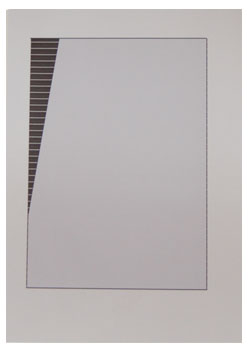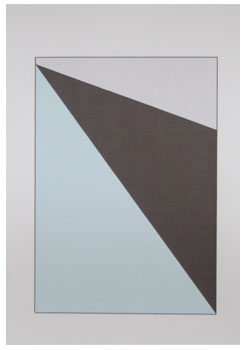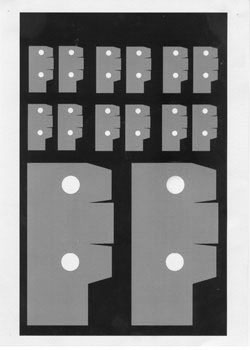


Invisible Paintings.
I made a machine inspired of the texts by Oyvind Fahlstrom. He wrote about the future of art and how we could use technologhy to create art. About how we could reproduce paintings with help of technologhy.
The machine creates pictures and you pay a small amount and with help of different buttons you print your picture. The machine is made of old found thrash like skateboardwheels, furniture old electronics. Yesterdays ideas of the future becomes real.
You can dowload a zip-file with pictures made by the machine and print it on your machine..zip



Below some texts written by Oyvind Fahlstrom..
Very generally:
The future of art, if it is to have any future, must be based on a synthesis. I regard most modern art as an experimental field for separate discoveries and solutions, the unity of composition and form, color composition, illusions of time and space, poetic content, automatism and gesture, experimentation with material. A growing number of artists end up in a technical idiocy of style, cultivating a particular halfway solution.
The future: an attempt to create complete works of art. Fewer — bigger — more important — more worked through. That it's natural for an artist to make a few such works, in the same way a composer or writer does. Natural to plan and "think through" a work to a greater extent and, if possible, to use technology and science, as has been done most significantly in music. See, for example, Schöffer's cybernetic mobiles.
Less generally:
In one particular respect I think that collaboration with technology is imminent.
Painting is lagging behind the other art forms because of its limited opportunities to reach its audience. By "reach" I mean to "own" a work of art, to possess it, to take it out when you want to, have it on display or not — like a book or a record — so that as many people as possible can experience an original, as they can with film and theater. By this I mean that the fetishism connected to handmade and signed originals would never exist; instead there would be a multitude of equally valuable copies. When art is bought today, it happens, as we know, only partly for the same reasons that books or records are purchased — and it is bought by an extremely limited group of people. Those to whom works of art mean the most have the least means to acquire them. This is an incredibly warped situation, to which many artists are oddly resigned.
Nowadays it is possible to make and reproduce exact copies of paintings, in which even the tactile values, to some extent, are retained. Taking the opposite approach: to create directly on a "negative" which is then reproduced is another matter, but this is something that must be possible to achieve in an age when neither push-button annihilation nor moon rockets are inconceivable.
The painting as a handmade object would then decrease in significance compared with a painting that exists for the experience, the content, that it can convey. Become invisible painting.
The way to this kind of painting, which offers the most powerful and deepest possible experience, does not, of course, lie at our feet. For me, it is largely a question of making the painting take hold as a never completely graspable, definable, but riveting vehicle of content. To differentiate visual material, creating a pictorial world as richly and clearly conceived as the art of the past but a world that is without either conventional form or meaning. To create new conventions, context, shapes that interpret what is sensed as crucial to our inner situation and our relationship to the world. To create a new visual language in which "form" and "content" collaborate unconditionally in order to convey this experience, which is neither purely "literary" nor musically "formal", but is somewhere between these extremes, though presumably closer to "content" than "form". Since, in accordance with our usual habits, we tend to interpret visual form (at least in the case of more complex form), the visible forms can never constitute such a contained and precise system as musical notation. By means of this interpretive experience we also distance ourselves from the object — the appetizing daubs of color on the wall — and approach a new spirituality in art (in a richer sense than Kandinsky's) and the invisible painting.
Öyvind Fahlström
Stockholm
February, 1960